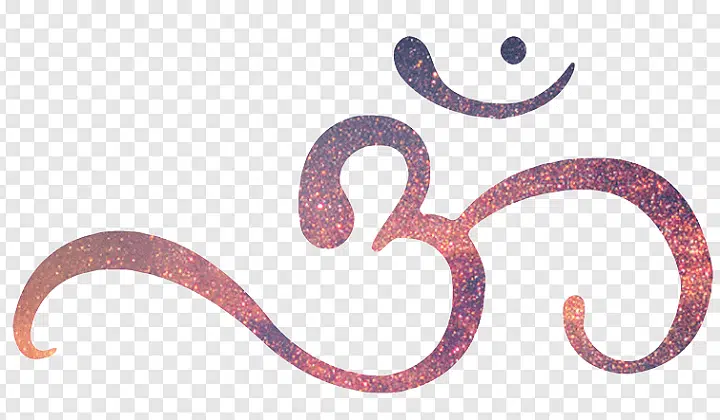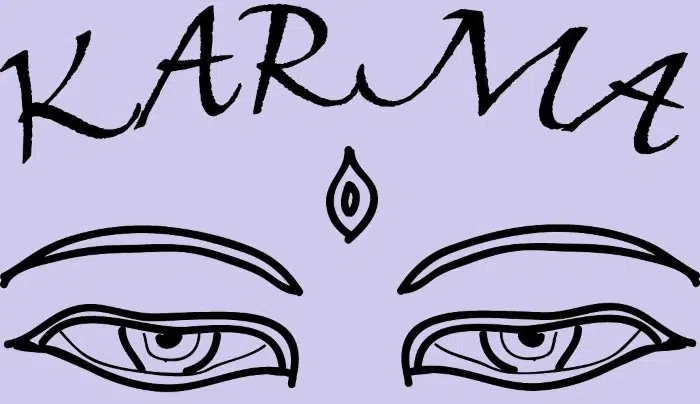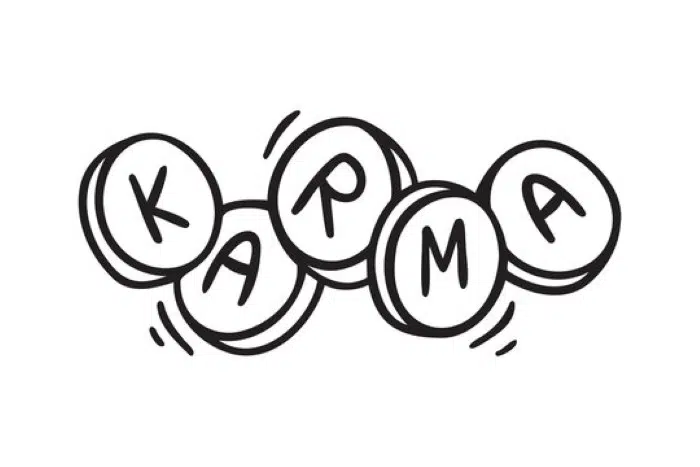Symbols are tiny but powerful marks that hold immense significance. Symbols can convey deep ideas and cultural beliefs without words. One such symbolic sign in philosophy and spirituality is the karma symbol. People of cultures and religions have been contemplating what the symbol of karma means, what it signifies, and how it is applied to life, meditation, art, and even social media.
The karmic symbol is a symbol for cause and effect in the world where everything that is done is followed by consequence. The symbol itself may vary in appearance with tradition, but it will never be pointing to anything else but the same general conclusion: actions create destiny. Whether it is a wheel, a knot, or a balance, the karmic symbol is always pointing to the cycle of actions and their wrath.
Understanding of the Concept of a Symbol
A symbol is a figure or sign representing something more than itself. A heart ♥ represents love, a cross ✝ represents faith, and a wheel of karma represents the law of action. The symbol of karma is one such godly mark that has spiritual as well as cultural significance.
Symbols succeed because they are perceived at a glance. When you glance at the wheel of round spokes, you don’t have to read words, you instantly recognize that it is all about cycles, order, and turning points of life. Such is the way the karma symbol communicates with millions of individuals in meditation halls, in artwork, and even in body ornamentation.
Origins of the Karma Symbol
The karma symbol is an extremely old Indian religious symbol. The karma symbol originated from Hinduism, Buddhism, and Jainism and each has its own iconography. The most widely recognized symbols of karma are wheel (Dharmachakra), endless knot, and balance scales.
| Symbol Form | Origin | Covers Meaning |
| Wheel of Dharma (Dharmachakra) | Buddhism & Hinduism | Cycle of causality, law of life |
| Endless Knot | Buddhism | Interdependence of actions |
| Balance Scales | General spirituality | Justice, fairness, karmic balance |
These symbols finally became widely accepted outside of religion and were incorporated into culture, yoga practice, and even mass design.
Karma Symbol in Religion and Spirituality
In Hinduism, action is karma, and the result of action carries over into the next life. The icon for karma in temples is generally a wheel or lotus mandala, reminding humans that what is done today will form tomorrow’s world.
Karma is also part of the teachings of the Buddha in Buddhism. An eight-spoked wheel, called the Dharmachakra, is one of the most well-known symbols for karma. Each of the eight spokes symbolizes a teaching or path and how right action results in enlightenment.
In Jainism, the karma is in the form of dust particles stuck to the soul, and the symbol of karma is closely associated with purity and equilibrium. In all of them, the symbol reminds human beings day after day that every action has a price.
Symbol of Karma in Culture and Identity
Besides spirituality, the face of karma in contemporary times is an identity label in everyday culture. Individuals are sporting pieces of jewelry or tattoos of the infinite knot or the wheel of karma as a symbol of equilibrium in life.
Artists and writers employ the symbol of karma in their pieces to symbolize fate, justice, or the wheel of life. Fashion and lifestyle companies also employ the symbol in order to raise awareness and put people in tranquility.
Some individuals see the symbol of karma as not religious but philosophy of life: “what goes around comes around.”
Karma Symbol in Science, Philosophy, and Everyday Life
Even in materialism, the symbol of karma is attached to natural science and reason. The reason for scientific logic follows cause and effect. The symbol here symbolizes the law that every cause will always have an effect.
Examples:
| Use | Example | Meaning |
| Philosophy | “you reap what you sow” | Moral consequence |
| Science | Newton’s laws | Every action will have a reaction |
| Daily usage | Karma will get you back | Justice or equilibrium |
Thus, the karmic symbol is religious in character as well as moral, logical, and philosophical.
Karma Symbol in Microsoft Word and on the Internet
Students, instructors, and artists will need to enter the karmic symbol very often into web documents, slides, or art. Microsoft Word and other such programs allow one to utilize symbols in many different ways.
| Method | Steps |
| Copy-Paste | Copy universal karma symbols like ☸ (wheel) or decorative knots and paste on Word |
| Insert Symbol | Go to Insert → Symbol → Search under Unicode (search for Dharmachakra ☸, Unicode 2638) |
| Unicode | 2638 and Alt + X for wheel ☸ |
| Images | Insert PNG or JPG images of karma knots, wheels, or balance symbols |
This is an easy means of obtaining the karma symbol for homework, religious PowerPoint presentations, or cultural symbols.
Karma Symbol in Technology and Media
Technology has also used the symbol of karma in various other applications. The wheel of karma ☸ emoji is utilized by individuals on social networking websites to express spiritual feelings or quotes about themselves. Symbolic application of the word “karma” is used as a system of scoring in online culture, for example, in Reddit, wherein “karma points” are used to gauge an individual’s reputation based on his/her behavior.
In films and television, the symbol of karma is best used when the story somehow relates to destiny, justice, or resurrection. It is a visual cue to viewers of topics regarding subtext.
Symbol of Karma in Daily Life and Society
The symbol is not just in temples or on the TV, but also in everyday objects. Endless knot rings, pendants, and bracelets can be bought from jewelry shops. The wheel of karma is used as a wall decoration in yoga studios. Inspirational posters typically use the term “Karma” with symbolic images.
| Symbol Use | Example | Meaning |
| Jewelry | Endless knot pendant | Reminder of balance |
| Tattoos | Wheel of Dharma | Life cycle, spiritual journey |
| Yoga studios | Wall decoration | Peace, mindfulness |
| Online | ☸ emoji | Digital spiritual expression |
It’s philosophy and fashion and one of the world’s most beloved spiritual icons.
Why Symbols like the Karma Symbol Matter
Symbols like the karma symbol matter because they are easy ways to recall deep wisdom. Instead of thick books, you are reminded by a symbol of duty, ethics, and divine order.
It is also a symbol of unity of culture. Others cannot precisely claim the same but can claim the language of the karma symbol.
Mindfulness on a daily basis is optimally encouraged by the karma symbol. If one sees it, he might pause and consider before going any further, knowing that every step counts.
The Psychology of the Karma Symbol
Psychologists believe that symbols find a way to the subconscious mind. The symbol for karma is not an image, but a thought provoker, and thus the individual identifies with responsibility, cycles, and fairness.
Whenever the individual wears or looks at the symbol for karma, it will remind them of responsibility or peace. It is as when road signs remind us instantly the symbol for karma governs behavior on a subconscious level.
To spiritual practitioners, the symbol of karma strengthens meditation and practice of morality. To others, it is an individual symbol of morality and destiny.
Frequently Asked Questions
What is the karma symbol?
It is a symbol of religious nature that represents the law of cause and effect, usually depicted as a wheel, a knot, or scales.
Where did the karma symbol come from?
From Hinduism, Buddhism, and Jainism cultures, where karma is an essential belief.
How do I write the karma symbol in Word?
You may write the Dharmachakra ☸ with Unicode (2638 + Alt + X) or cut and paste from the internet.
Is the symbol of karma in use today in culture?
Yes, it’s hip in tattoos, jewelry, yoga studios, and Facebook status.
Why is the symbol of karma meaningful?
Because it reminds us that every action leaves an imprint, making personal and collective fate.
The symbol of karma is arguably the most important world spiritual symbol. From its beginning in Hinduism, Buddhism, and Jainism, to contemporary fine art, tattoos, and web use, it continually reminds us that actions have consequences.
In Word and online, it is inserted using Unicode, copy-paste, or pictures. In culture, it shows up on jewelry, paintings, and in yoga studios. In psychology, it refers to a feeling of fairness, fate, and awareness.
The karma symbol carries the idea that an easy sketch can embody profound universal wisdom. It’s not only a religious symbol but also a symbol of identity and culture.



